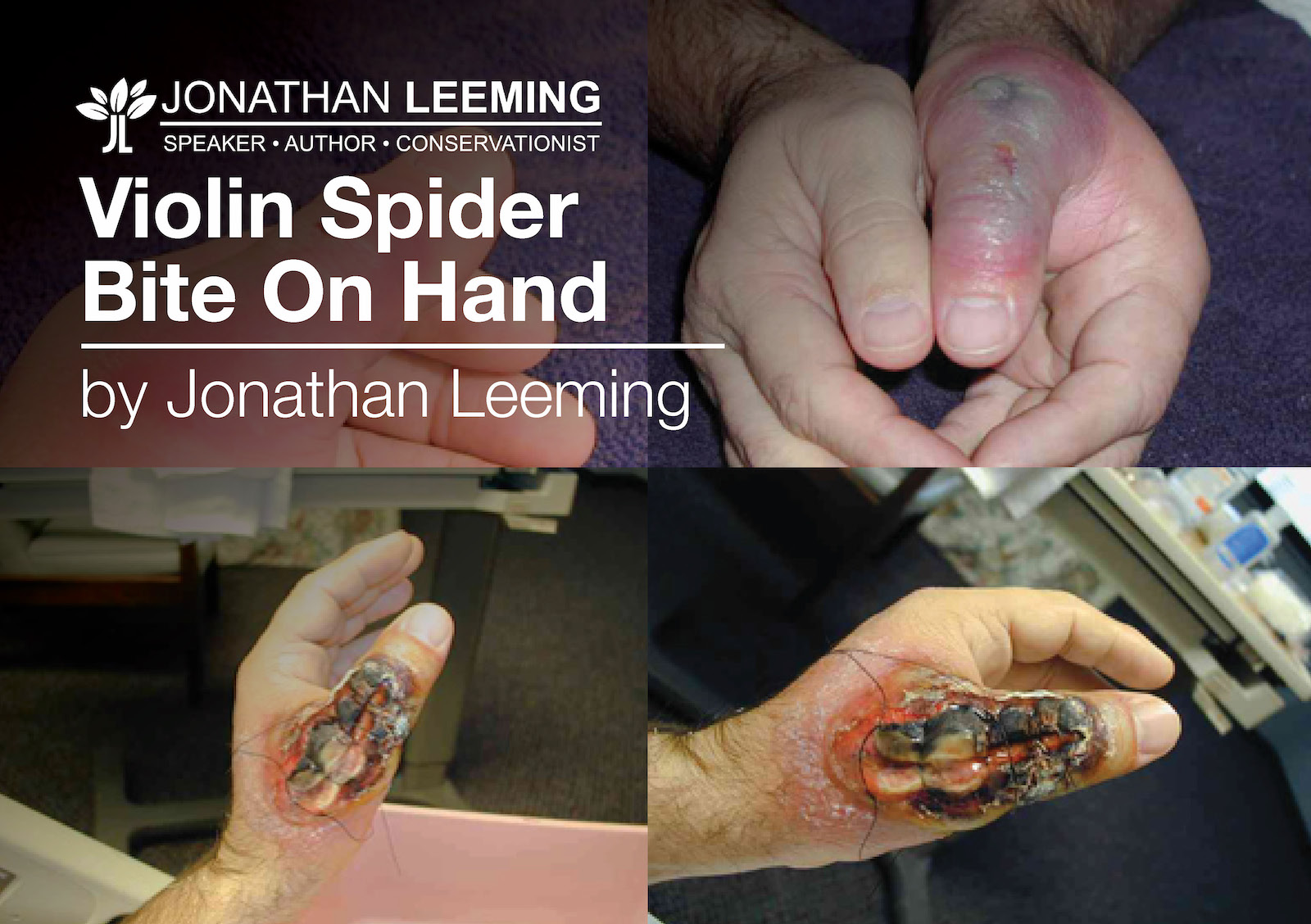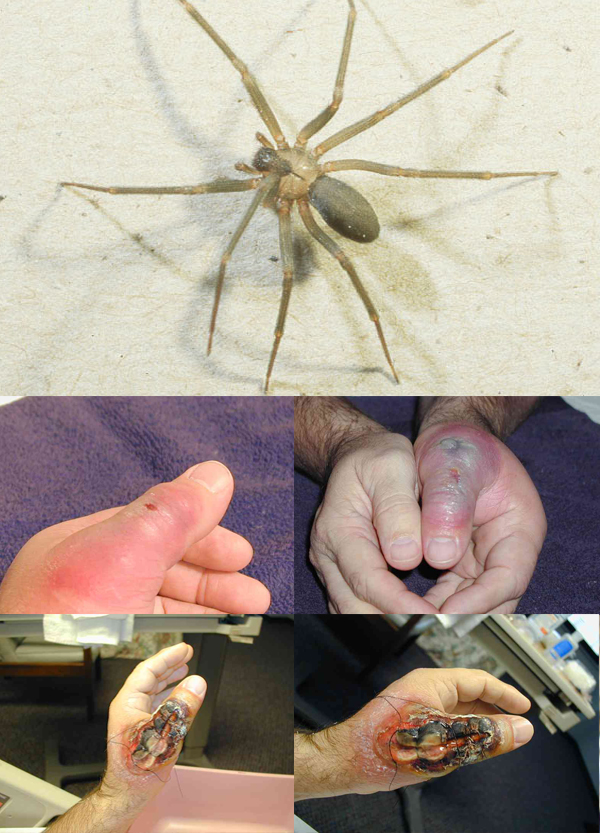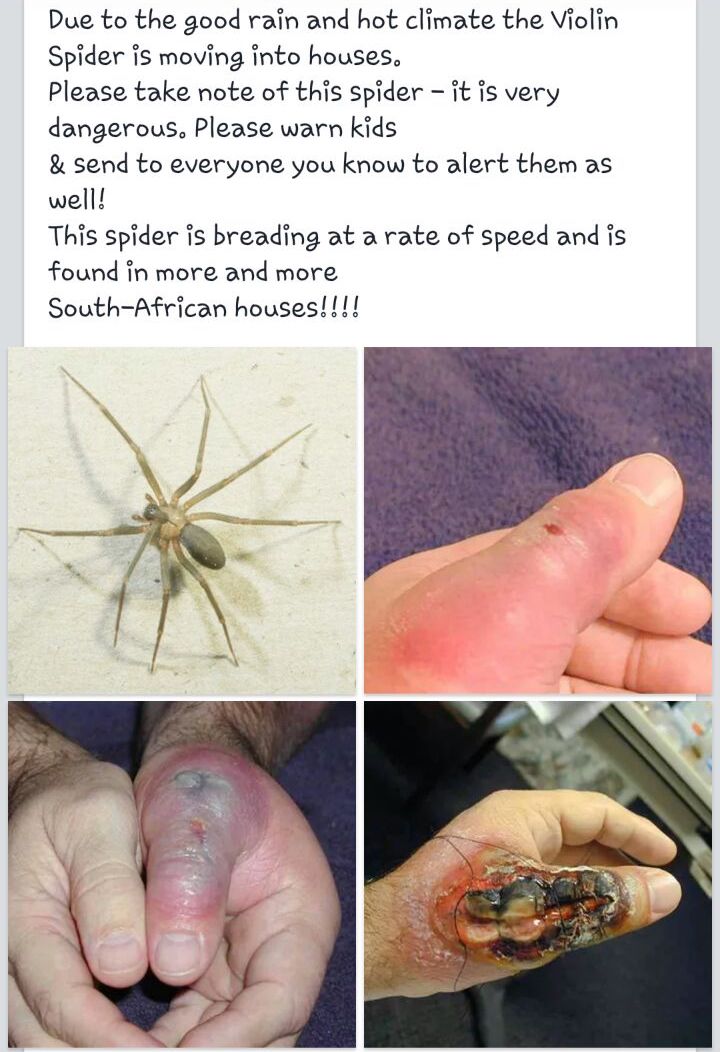
There is a Violin Spider bite email/ social media post that has spread throughout the world. There are many different variants, but the images and general contents are the same. It’s responsible for some of the Violin Spider bite mass hysteria. It shows the hand of a “Violin Spider bite victim”, together with a photo of a Violin Spider. But is this email/ social media post fact or fiction?
Warn as many people as you can. Due to the good rain and hot climate the Violin Spider is moving into houses. It is often seen as a ‘Daddy longlegs’ spider and not the dangerous Violin spider.
Please take note of this spider - it is very dangerous. Please warn kids and send to every one you know to alert them as well! This spider is breeding at a rate of speed and is found in more and more South-African houses!!!!

Due to the good rains and hot climate the Violin Spider is moving into houses. Please take note of this spider - it is very dangerous. Please warn kids and send to everyone you know to alert them as well!!
This spider is breading at a rate of speed and is found in more and more South African houses!!!!

This email/ social media post regarding a Violin Spider bite has been circulating all over the world since 2004. Its origin is unknown. The spider is the American Brown Recluse Spider (Loxosceles reclusa) which does not occur in Africa. The images of the hand are a bacterial infection and not a spiderbite.
There is vast amount of literature which indicates that most Violin Spider bites produce only minor symptoms, healing without complications or medical intervention. Very few bites produce the severe necrotic lesions for which these spiders are so infamous. These severe symptoms are often a result of bacterial infections and pre-existing medical conditions.
In South Africa and many other countries, physicians have for years automatically blamed Violin Spiders for any unexplained necrotic skin injury. A diagnosis is made in the absence of any collected spider and often where Violin Spiders do not even exist. Countless patients have been misled and the general population is firmly convinced that these spiders pose a serious public health threat.
Southern African Violin Spiders (nor any other species) increase their breeding cycles in response to rainy or hot weather. Their habitat preference does not change in response to weather patterns.

This content is the product of many hours of work based upon years of experience. If you found it useful or of value, then please consider a small donation to help me offer more content like this!
I'm on a mission to reduce the burden of spider bites and scorpion stings across Southern Africa!
Newsletter | Public Events | Books & Workbooks | Presentations | Activities |Professional Development | Shop
